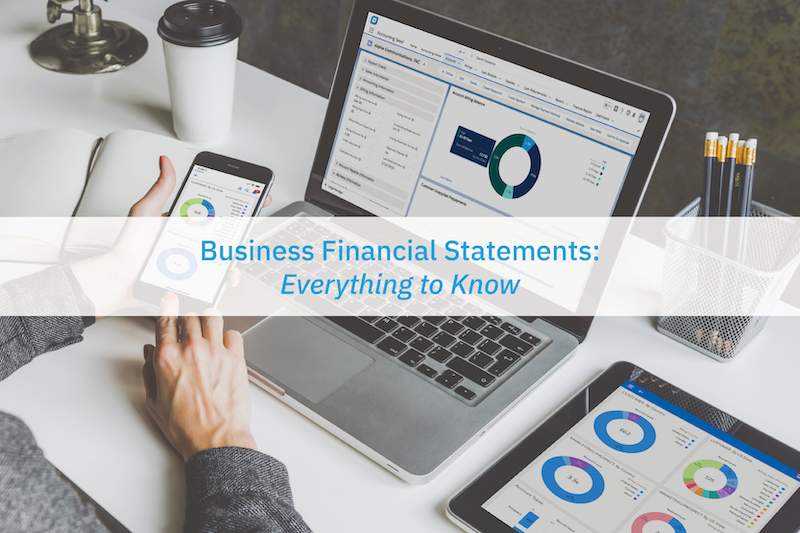Automated Accounting Statements
If you use Accounting Seed to keep your ledgers, you can generate financial reports without any further setup, exporting them to Excel or PDF if you wish. Aside from the balance sheet, income statement, and cash-flow statement, Accounting Seed can generate other reports.
For example, you can create an automatic report comparing your income statement with your projected budget. It’s easy to compare accounting periods, such as last quarter and current quarter, and to use drag-and-drop to focus on particular data or customize your reports.
Accounting Seed makes it simpler to generate financial statements for small companies without huge accounting departments. Learn more in the guide to Accounting Automation: Benefits & How to Use It For Your Business.
Why You Need Business Financial Statements
Whether you use automation to put together your statements or you do it by hand, financial statements are a valuable tool. They provide a snapshot of how your business is earning, spending, and handling money. Over time they give you a simple way to compare finances quarter to quarter, month to month or year to year. Different statements provide different information.
Why You Need a Balance Sheet
The balance sheet shows how your assets compare to your debts. Too much debt is unhealthy, though “too much” is a tricky number to pin down. A company that takes out loans to buy construction equipment should expect a different debt-to-asset ratio than a web graphics company whose assets are a couple of laptops.
Why You Need an Income Statement
The income statement shows how you’re spending money, detailing how much you’ve earned and what’s happened to it. Going over the statement may reveal that your gross sales income is being nibbled away by a high rate of returns, interest on loans, or high overhead. Once you know the problems, you can set to work solving them.
Why You Need a Cash Flow Statement
The cash flow statement shows whether the money you have coming in is enough to cover expenses. If your income is high and your cash flow is low, it may be that you’re not collecting on accounts receivable fast enough.
Reading Your Business Financial Statements
There are two ways to read statements and gain a financial overview: horizontally or vertically.
- A horizontal analysis looks at trends over time, such as how earnings per share have changed over the past three quarters.
- Vertical analysis compares different figures on the same report. For instance, how much of your cash flow went to payroll, to overhead, or to buying raw materials?
Using Good Financial Judgment
To make good use of your statements you need good financial judgment. There are many points where accurate accounting requires judgment calls, such as figuring out the value of your assets.
The fair market value of your equipment, for instance, can make a difference to your debt to asset ratio. That makes it tempting to pick the biggest value allowed by accounting rules. Deciding how much of the income in accounts receivable is really a bad debt makes a difference to the balance sheet too.
Managers may tend to game the income and cash flow business financial statements without doing anything fraudulent. If quarterly income looks bad, postponing necessary purchases until next quarter can make it look better. You should be aware of potential weaknesses when you go over the statements and be willing to dig down into the details to clarify any questions you have.
How to Use Financial Statements
Suppose you’re concerned because the annual balance sheet shows you’re carrying an extremely high debt load. You might first research whether companies in your industry normally carry a high level of debt, and how you compare to your competitors. Then you have to ask if the debt level is sustainable.
If there’s an economic downturn ahead, will you still have enough revenue to service the debt? Are interest rates likely to rise? Should you prioritize paying off some of the debt early?
Statements and Dashboards
If you’re concerned about the fine details — where exactly does most of your sales income come from? — Accounting Seed makes finding answers easier thanks to its customized financial dashboards. With the software automatically updating the general ledger when money is coming in and out of the business, the dashboards show the information you most want to know in real-time.
Working from a dashboard also makes it easy to dig down into the data and learn the details of any underlying transactions. This kind of granularity can surface issues and avoid nasty surprises in periodic business financial statements.
Use Accounting Dashboards to Drive Deep Insights
Choosing the right dashboard simplifies the process of turning large, bulky amounts of data into something visually understandable.You can take the dashboard information and use it to create reports and better presentations, analyze business performance, and review useful statistics, metrics, and benchmarks.
Making use of Accounting Seed’s automated accounting software simplifies your accounting processes and makes it easier to mine your ledgers for deep, business-driving insights.


